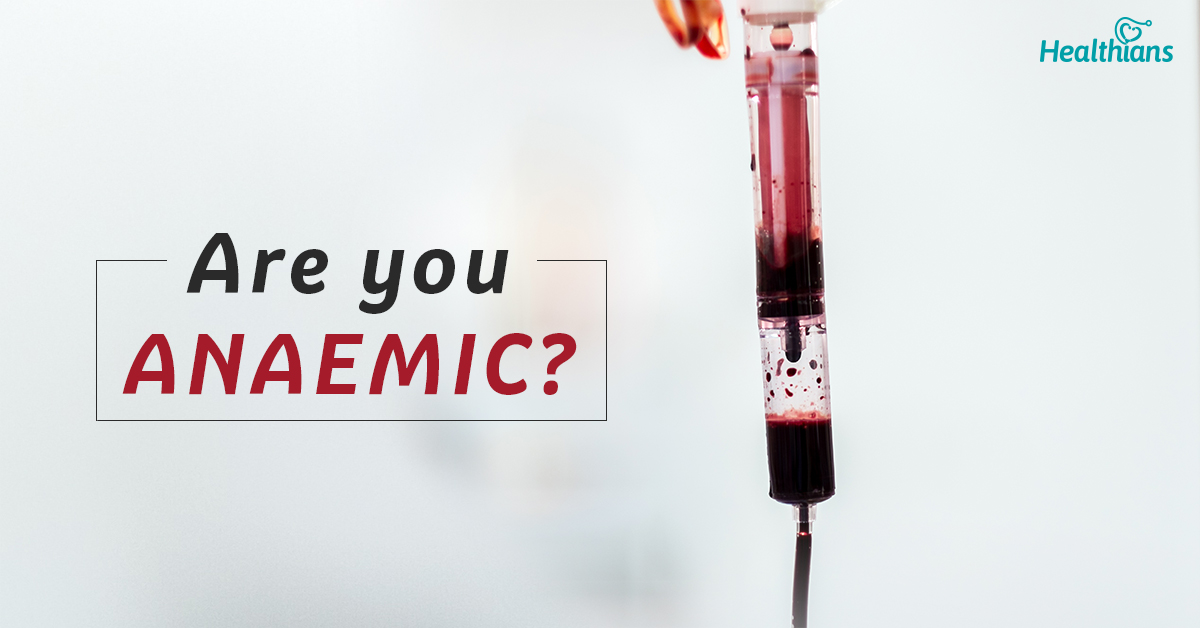Contributed by – Healthians Team
51% of Indian women aged 15-49 are anaemic, most in the world: Findings of the new Global Nutrition Report 2017 (as published in TOI, 7/11/17).
These numbers not only highlight the fact that women health in India is facing a serious nutritional challenge with the largest number of anaemic women in the world but also the unveils the truth that lack of awareness of the signs and symptoms of anaemia is a major factor responsible for the spread. Awareness clubbed with timely action, including correct diagnosis and preventive steps can easily curb the numbers.
Do you feel tired, worn out or exhausted most of the time? If Yes, then there are high chances that you might be anaemic!
What is Anaemia?
Anaemia occurs when the level of red blood cells or the level of haemoglobin in the body is lower than normal, which in return deprives the body of sufficient oxygen. It is not a disease but is a result of some malfunction in the body.
Haemoglobin is important as it helps carry oxygen in the blood. The lack of haemoglobin causes deficiency of life-giving oxygen to all the vital organs.
Causes of Anaemia
Anaemia occurs when the blood does not have enough red blood cells. This is caused when there is a:
- Decreased production of RBCs in blood
- Increased blood loss
- Excessive destruction of RBCs
Signs and Symptoms of Anaemia
The most common symptom of anaemia is fatigue. An anaemic person feels tired after short periods of exertion, as the body’s cells become starved for oxygen. As anaemia worsens, the body can experience visible physical changes like skin could become pale, brittle nails and bleeding from cuts may take longer to stop.
People suffering from mild anaemia may not have any symptoms or may have only mild symptoms. But those suffering from severe anaemia, symptoms can be more severe. These symptoms will vary according to the type of anaemia and the common symptoms include:
- Weakness
- Shortness of breath and headache
- Irritability
- Inability to concentrate or think clearly
- Dizziness
- Cold hands and feet
- Irregular heartbeat
- Chest pain
- Sexual dysfunction
Diagnosis of Anaemia
To correctly diagnose anaemia, depending on the severity of anaemia, the following are important:
- Medical and family history
- Physical examination is done in which signs of anaemia in eyes (eyes become pale), signs of anaemia in fingernails (nails become brittle) etc. are checked.
- Blood test for anaemia: This will include complete blood count (CBC), blood iron levels, vitamin B12, and folate and kidney function test.
- Urine test: This is done for detecting blood in the urine.
- Faecal occult blood test: This is performed to examine the stool sample for the presence of blood.
- Gastroscopy or colonoscopy
- Bone marrow biopsy
Treatment of Anaemia
Treatment of anaemia will depend on the cause and severity. Treatment will include dietary changes, supplements, medicines, procedures, or surgery to treat blood loss.
Some facts about Anaemia
- Iron deficiency is the most common cause of anaemia.
- Anaemia can have many causes, including certain kind of diseases or conditions and medications.
- There are certain forms of anaemia which can’t be prevented because they are caused by a breakdown in the cell-making process.
- For women considering or planning a pregnancy, the doctor will most likely recommend supplements, especially folate, even before conception.
- Iron supplements should be taken only when advised by the doctor.
- There are certain people who are at high risk of developing anaemia like:
Menstruating women
Pregnant and breastfeeding women
Infants (especially if premature)
Children going through puberty
Vegetarians
People with cancer, stomach ulcers and some chronic diseases
People on fad diets
- If left untreated, anaemia can cause many health problems like severe fatigue which can hamper daily activities, heart problems and the severest form can lead to death.
- One must consult a doctor if following symptoms are present:
Persistent fatigue, breathlessness, rapid heart rate, pale skin, or any other symptoms of anaemia
Poor diet
Very heavy menstrual periods
Symptoms of an ulcer, gastritis, haemorrhoids, bloody or tarry stools, or colorectal cancer
Concern about environmental exposure to lead
A hereditary anaemia runs in the family
Don’t risk damage due to untreated anaemia, get yourself checked.




